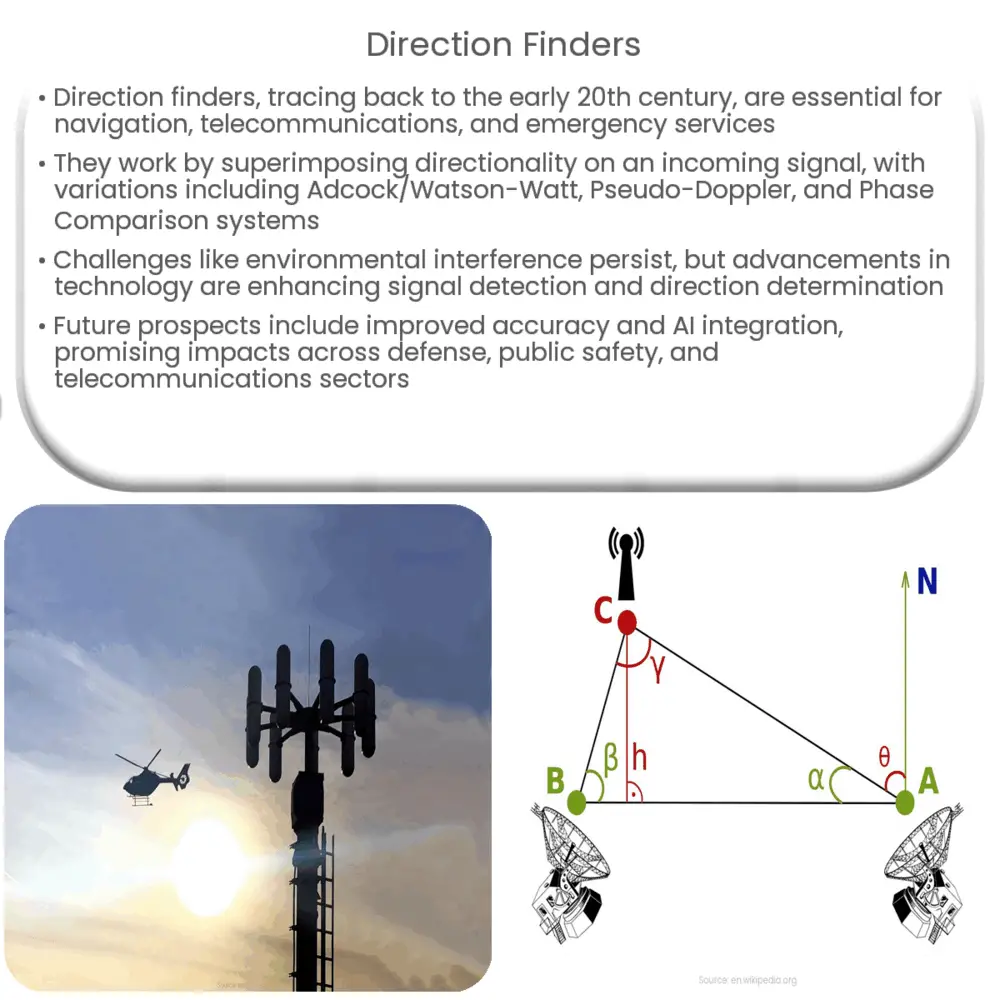Explore the fascinating world of direction finders, their history, types, applications, challenges, and future prospects in our comprehensive guide.

Introduction to Direction Finders
Direction finders are incredibly useful instruments that have been instrumental in the evolution of navigation, telecommunications, and emergency services. At its most fundamental level, a direction finder is a device used to ascertain the direction from which a received signal was sent.
Historical Background of Direction Finders
The history of direction finders is a captivating journey that dates back to the early 20th century. During World War I, direction finders became an essential tool for military operations, used to locate enemy wireless installations. It was during this era that the foundations of modern direction finding techniques were laid.
Functioning and Principles
Direction finders operate on the principle of superimposing directionality on an incoming signal. This is typically achieved through the use of antennas configured in an array. The direction finder compares the signal arrival time, or phase, from multiple antennas to calculate the direction to the source of the signal. The direction to the source, also referred to as the ‘bearing’, is usually expressed in terms of the angle from a reference direction, such as True North.
Different Types of Direction Finders
- Adcock/Watson-Watt Direction Finder: This type of direction finder, invented by F. Adcock and improved by R. A. Watson-Watt, uses a pair of vertical antennas to get a bearing on the source of a signal. It is most commonly used in aviation and marine applications.
- Pseudo-Doppler Direction Finder: This type utilizes the Doppler effect to ascertain the direction of a signal. When a signal is transmitted from a moving source, its frequency appears to change as perceived by a stationary observer. This change is used to determine the direction.
- Phase Comparison Direction Finder: This system uses a multi-element antenna system to compare the phase of the incoming signal across the elements. It can offer high accuracy, but is typically more complex and expensive.
Applications of Direction Finders
Direction finders have a broad spectrum of applications ranging from maritime navigation, aircraft navigation, wildlife tracking to emergency services such as search and rescue operations. One notable use is in the Automatic Dependent Surveillance-Broadcast (ADS-B) system in aviation, where direction finders help to track aircraft positions.
Advancements in Direction Finding
In recent years, advancements in technology have brought significant improvements to direction finding systems. Digital signal processing techniques, for instance, have made it possible to enhance signal detection and direction determination even in environments filled with noise and other interfering signals. Newer algorithms have allowed the creation of adaptive beamforming systems, which can dynamically focus on signals from a particular direction while suppressing signals from other directions.
Challenges and Limitations
Despite its many uses and advancements, direction finding systems still face several challenges. In particular, they can be affected by environmental factors such as terrain, atmospheric conditions, and multi-path effects where signals reflect off surfaces before reaching the direction finder. Furthermore, sophisticated signal sources may employ techniques such as frequency hopping or spread spectrum to make it difficult to ascertain the direction of the signal. Despite these challenges, continuous research and innovation in the field are expected to lead to more robust and accurate direction finding systems in the future.
Future Prospects
The future of direction finding is promising, with potential advancements ranging from improved accuracy to the development of systems capable of locating signals in three dimensions. The integration of artificial intelligence and machine learning into direction finding systems could also provide exciting opportunities. These advancements could have profound implications for a variety of industries, including defense, public safety, and telecommunications.
Conclusion
In conclusion, direction finders have played a pivotal role in numerous applications since their inception in the early 20th century. Despite facing certain challenges and limitations, the continual improvements and innovations in this field make direction finding an exciting area of study. With the integration of new technologies and advancements, these systems are set to continue playing an integral role in various sectors, ranging from emergency services to telecommunications, and much more.

